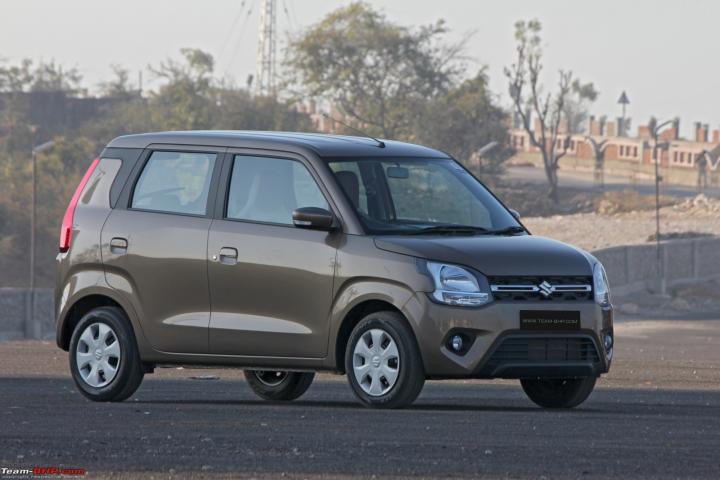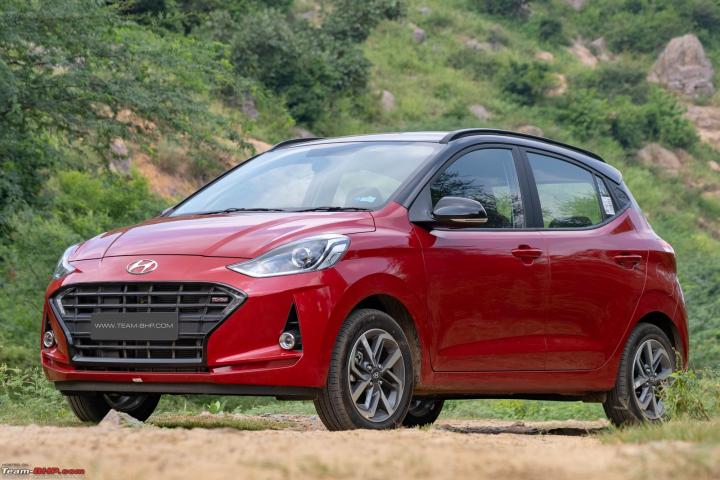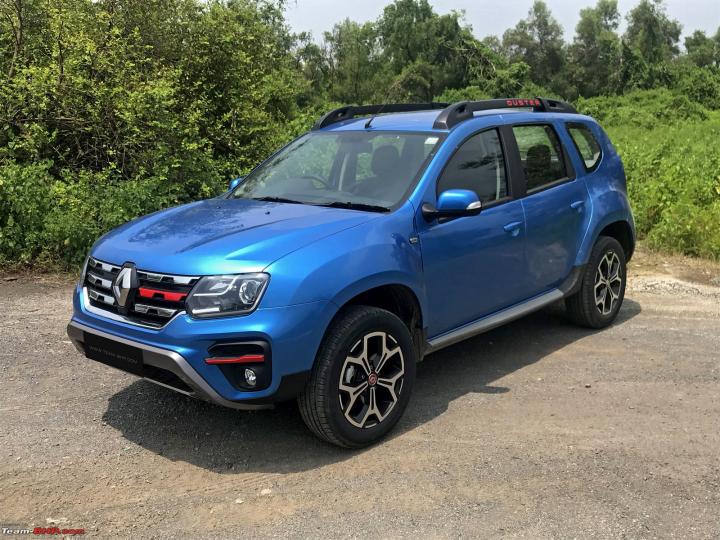News
100 BHP/ton: The new normal power-to-weight ratio in 2021
The S-Presso of 2021 has a higher power to weight than the old Ford Ikon 1.6, the WagonR of 2021 beats the Palio 1.6 Sports and a Hyundai Aura of 2021 makes more power for its weight than the first generation Honda City VTec and the original Honda Civic!
BHPian CrAzY dRiVeR recently shared this with other enthusiasts.
Recently we have discussed many improvements made by different brands in the last decade of the Indian Automotive Industry, and the various features that have become commonplace today - as compared to the luxury cars of the previous years! One common theme emerging in many a conversation is that people believe the recent past has been more about features than performance improvements - more bling than substance!
Not many appreciate the significant power to weight jump that has happened in modern cars! Hence this thread.
But wait, what am I talking about? Let's consider a few examples.
We all know 100 bhp/ton was considered a performance benchmark of the last decade. In fact, it was rare for even performance oriented cars to hit this magical number and most mass-market cars produced significantly less, mostly ranging between 70 - 80 bhp/ton. Let us consider some of our icons:
- First generation Honda City 1.5 VTec - 106 bhp/985 kgs - 107.6 bhp/ton
- Baleno 1.6 - 94 bhp / 975 kgs - 96.4 bhp/ton
- Palio 1.6 Sports - 98.6 bhp / 1015 kgs - 97.1 bhp/ton.
- Ford Ikon 1.6 - 90 bhp / 998kgs - 90.18 bhp/ton.
- Honda Civic 1.8 - 130.19 bhp / 1210 kgs - 107.6 bhp/ton.
Now, compare this to some present-day mass-market cars:
- Maruti Suzuki S-Presso - 67.05 bhp / 726 kgs - 92.36 bhp / ton.
- Maruti Suzuki WagonR 1.2 - 81.8 bhp / 830 kg - 98.6 bhp / ton.
- Maruti Suzuki DZire - 88.5 bhp / 880kgs - 101.7 bhp/ton.
- Hyundai Aura 1.0 - 99 bhp / 900 kgs - 110 bhp /ton.
- Nissan Magnite - 99 bhp / 1014 kgs - 98 bhp / ton.
Yes, you read that right!
The S-Presso of 2021 has a higher power to weight than the old Ford Ikon 1.6, the WagonR of 2021 beats the Palio 1.6 Sports and a Hyundai Aura of 2021 makes more power for its weight than the first generation Honda City VTec and the original Honda Civic! Modern cars have become faster, at least in a straight line!
100 bhp/ton - Is it the new normal of 2021? Lets take a look at the long list of cars that hit over the 100 bhp/ton mark in 2021! (PS: Not a complete list, some companies don't reveal proper weight figures and please pardon any errors in my math!
- Maruti Suzuki Swift 1.2 - 88.5 bhp/ 875 kgs = 101.14 bhp/ton.
- Maruti Suzuki Baleno Smart Hybrid 1.2 = 88.5 bhp / 865kgs = 102.3 bhp/ton
- Maruti Suzuki DZire 1.2- 88.5 bhp / 880kgs - 101.7 bhp/ton.
- Maruti Suzuki Ciaz 1.5 - 103.2 bhp / 1015 kgs = 101.6 bhp/ton
- Honda City 1.5 iVTec - 119 bhp/ 1107 kgs - 107.5 bhp/ton
- Honda Amaze 1.5 Diesel - 99 bhp/993 kgs - 100 bhp/ton
- Hyundai Creta 1.4 - 138bhp / 1323 kgs - 104 bhp/ton.
- Hyundai Venue 1.0 TGDi - 118 bhp / 1095 kgs - 108 bhp/ton
- Hyundai Aura 1.0 TGDi - 99 bhp / 900kgs - 110 bhp/ton
- Hyundai i10 Nios 1.0 TGDi - 99 bhp / 900kgs - 110 bhp/ton
- Hyundai i20 1.0 TGDi - 118.3 bhp / 1096 kgs - 107.9 bhp/ton
- Ford Ecosport 1.5 Petrol - 121 bhp / 1188 kgs - 102 bhp/ton
- Volkswagen Polo 1.0 TSi - 109bhp / 1092 kgs - 102 bhp/ton.
- Kia Sonet 1.0 TGDi ~ 108 bhp/ton (Assuming same as Hyundai Venue 1.0 TGDi)
- Kia Seltos 1.4 TGDi ~ 104 bhp/ton (Assuming same as Hyundai Creta 1.4 TGDi)
- Renault Duster 1.3 - 154 bhp / 1291 kgs - 119 bhp/ton.
- MG Hector 2.0 Diesel - 168bhp / 1618 kgs - 104 bhp/ton.
- Jeep Compass 2.0 Diesel - 171 bhp / 1537 kgs - 111 bhp/ton.
Maybe yes, maybe not - but surely there is no denying that modern-day cars have significantly higher power/weight benchmarks than the cars from the previous decade. No matter which segment you choose from - hatchbacks, compact sedans, C sedans, crossovers, C crossovers etc - there is a 100 bhp/ton mass-market car available for your selection! And there are many more that come really close to this benchmark.
Funnily enough - we can thank fuel efficiency and emission norms for this! Resulting in:
- Less weight
- More efficient engines catering to BS6 norms
- Turbo-charged small motors.
Something for us enthusiasts to rejoice?
Here's what BHPian Shreyans_Jain had to say on the matter:
Three factors are obvious
1. The advent of modern turbo petrol engines in the sub 10L segment. These engines bring power and torque figures previously unimaginable in this segment. The Aura or Altroz turbo petrol are more powerful than the erstwhile diesel Corolla Altis.
2. The ever reducing kerb weights. People complained the 700 something kg Nano was too light to be a ‘proper’ automobile. Trust Maruti to take it a step or two further. Seriously doubt if there is any proper four door four wheeler anywhere in the world that is lighter than the S-Presso. Of course, this end of the market remains unperturbed by the shameful crash test ratings.
3. 150-170 hp is now par for course in the 17-25L range, along with proper 6 and 7 speed automatic transmissions. A decade ago, these specs were found only in high end German machinery. You had the Honda Accord at 140 odd bhp, and then there were the C Class and 3 Series at 170-180. Today, we can get a Duster with an actual 155 hp Mercedes engine and CVT automatic for 14L. Or 170 hp Harrier with a modern 6-speed AT for 19L. This was Audi Q5 territory not too long back.
Here's what BHPian V.Narayan had to say on the matter:
Thank you for tabling this as a thread to stimulate debate.
Before I express my views, I'll confess I am guilty more than most for going for powerful cars.
From the point of view of conservation of {scarce} energy, limiting dangerous air pollution this trend is counter productive to mother earth and flies in the face of rational thinking. To move 4 humans and 50 kgs of luggage at 80 kmph we do not need 100bhp/ton. Even a regional turboprop airliner needs only 250 to 300 bhp/tonne!!
For terrestrial travel we need {my educated guess} no more than 20 or 25 bhp per tonne even less. But all that extra bhp is to fulfill our ego needs, our desire for power, our need for speed & vroom-vroom. If we look back at the family cars of the 1940s and 1950s most had 30 to 50 bhp engines and they did the job of transporting a family comfortably. In every other mode of transportation {airliners, railways, trucks, ships}, due to technology, a given quantum of power is transporting a greater number of passengers or weight of cargo than 50 years ago or moving it much faster, all except in the personal automobile sector.
As future generations take over who I believe will be more green conscious than we are this trend, in my assessment, will reverse. The interests of enthusiasts may not be in line with the interests of society and mother earth.
Here's what BHPian apachelongbow had to say on the matter:
100 bhp/tonne is not really reflective of solid performance. If we consider the 0-100 kmph figure of most of the modern cars, they fall in between 12.x and 14.x seconds. The engines may be high bhp, but sometimes the gearing is medicore, sometimes the torque is wheezy. A 2021 Baleno is not faster than a 2005 Honda city 1.5 VTEC.
The kick in the pants acceleration is better measured by torque/ton rather than bhp/ton.
Here's what GTO had to say on the matter:
I am honestly surprised at how much fun the cheap cars are today. Loved the tune of the 1.0 NA motor in the S-Presso, and enjoyed the Aura / Grand i10's turbo-petrol. Manufacturers are definitely becoming better and better at massaging more power out of their small engines. And it's not just small cars - even in the segments above, we've seen a significant bump up in performance. Who would have imagined an Innova with 172 BHP? That's more power than the C-Class & 3-Series of a decade ago.
Eagerly waiting for 125 BHP / Ton to become the new normal. Although, the democratization of performance will really happen with EVs. Electric cars will give us <10-lakh rupee options that can do 0 - 100 in 7 to 8 seconds.
Check out BHPian comments for more insights and information.

























